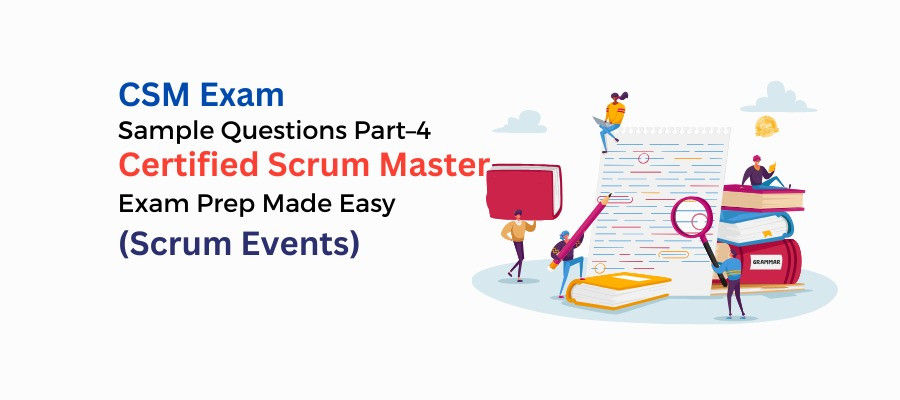CSM Exam Sample Questions Part 4: Scrum Events

Continuing our thorough CSM exam preparation series, we now focus on Scrum Events, which are time-boxed rituals that coordinate the flow of work in a Scrum project.
Scrum defines five distinct events that give a structure for collaboration, inspection, and adaptation. A good understanding of these events is critical for passing the CSM exam and successfully applying Scrum to your projects.
Let's dive into some practice questions to test your knowledge of Scrum Events:
1. A primary presenter at the Sprint Review:
- Developers.
- Scrum Master.
- Product Owner.
- Users asking questions and giving feedback.
2. Who can attend Daily Scrum?
- Only Developers.
- Developers and Scrum Master.
- Developers, Scrum Master, Product Owner.
- Anyone can attend Daily Scrum.
3. When can a Sprint be cancelled?
- When the Product Owner identifies new requirements.
- When the Sprint Goal becomes obsolete.
- When the Developers realise they cannot complete the forecasted work.
- When new users pressurize to start a new Sprint.
4. A Sprint's maximum duration is:
- 2 weeks.
- 4 weeks.
- Not more than 1 calendar month.
- Whatever the Product Owner deems appropriate.
5. The 5th event in Scrum is:
- Sprint Retrospective.
- Product Backlog Refinement.
- Sprint. It is a container event.
- Sprint Planning.
6. The subject matter experts (SMEs) invited for a Sprint Planning session are determined by:
- Scrum Team.
- Product Owner.
- Scrum Master.
- Senior stakeholders.
7. At a Sprint Retrospective, a Scrum Master MUST:
- Ensure the event takes place.
- Facilitate and Timebox the Sprint Retrospective.
- Ensure everyone understands that the purpose is to plan ways to increase quality and effectiveness.
- All of the above.
8. It is best to do Product Backlog estimation during:
- Sprint Planning
- Sprint Retrospective.
- Product Backlog Refinement.
- Scrum doesn't mandate estimation, so it is best avoided.
9. A Sprint Review is the first opportunity for the Product Owner to see the working product Increment.
- True.
- False.
10. The best length of a Sprint in Scrum is:
- One week.
- There is no ideal Sprint length. It depends on various constraints and can vary.
- Two weeks.
- One month.
11. During a Sprint, the Developers realized that they cannot complete the work selected for the Sprint. Who should review and adjust the work selected?
- Scrum Team.
- Developers and Product Owner.
- Developers and Scrum Master.
- Product Owner and Scrum Master.
12. A new Sprint begins when:
- Immediately after the prior Sprint has concluded.
- After the Sprint Planning has been completed.
- Next Monday.
- Only after the prior Sprint work has been completed.
Up Next!
In the next edition of this series, we'll look at Scrum Artifacts, which are the key informational items that give transparency and guide the Scrum Team throughout the project.
Please do not hesitate to contact our Scrum specialists! They're available to answer any questions you may have and to support you on your route to CSM certification.



